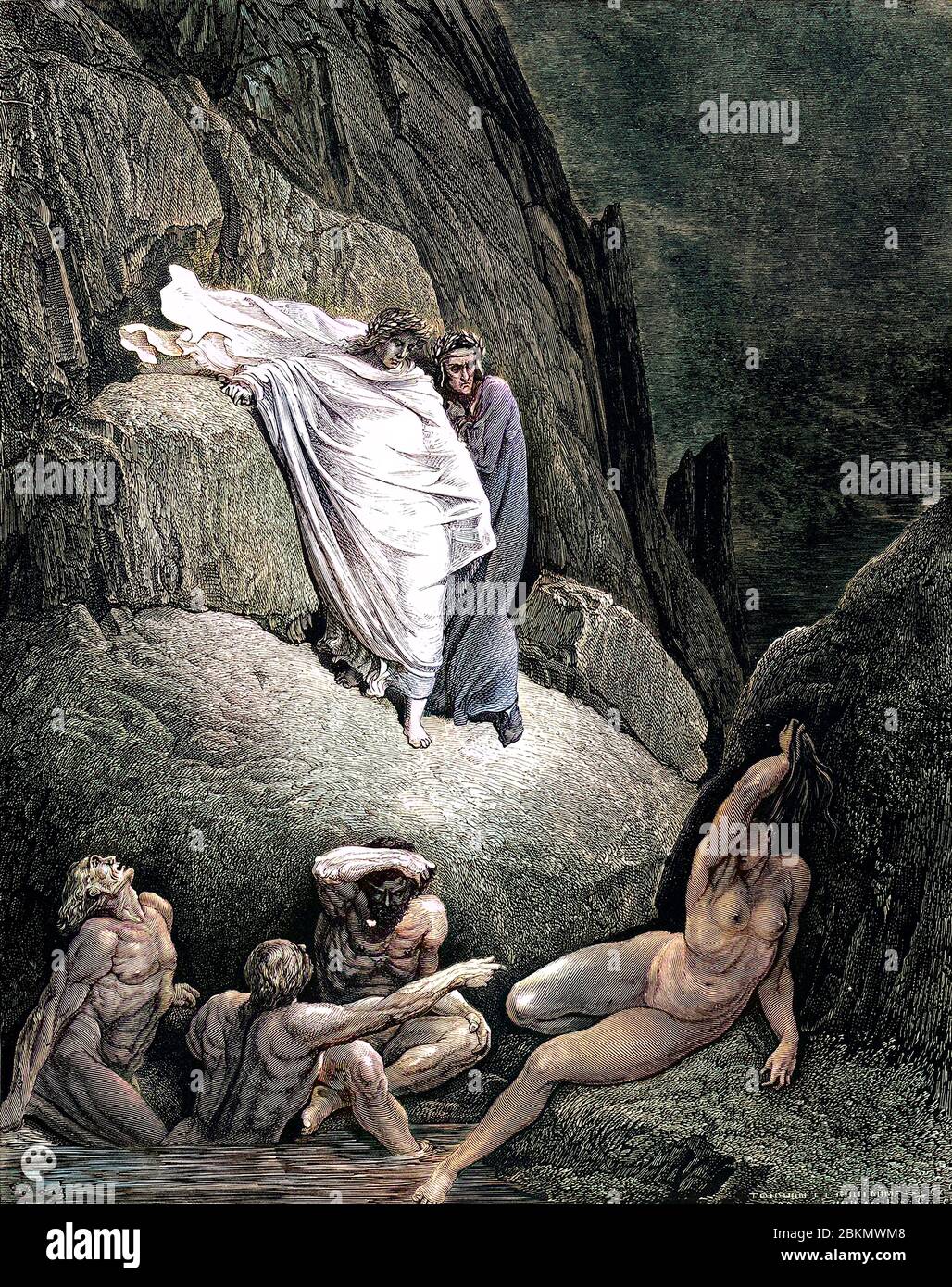Machine colorized with Artificial Intelligence (AI) From the Divine Comedy by 14th century Italian poet Dante Alighieri. 1860 artwork, by French artist Gustave Dore and engraved by Stephane Pannemaker, from 'The Vision of Hell' (1868), Cary's English translation of the Inferno. Dante wrote his epic poem 'Divina Commedia' (The Divine Comedy) between 1308 and his death in 1321. Consisting of 14,233 lines, and divided into three parts (Inferno, Purgatorio, and Paradiso), it is considered the greatest literary work in the Italian language and a world masterpiece. It is a comprehensive survey of me

Image details
Contributor:
Historic Illustrations / Alamy Stock PhotoImage ID:
2BKMWM8File size:
51.1 MB (5 MB Compressed download)Releases:
Model - no | Property - noDo I need a release?Dimensions:
3759 x 4750 px | 31.8 x 40.2 cm | 12.5 x 15.8 inches | 300dpiDate taken:
16 January 2020Location:
Inferno, HellMore information:
This image could have imperfections as it’s either historical or reportage.
Machine colorized with Artificial Intelligence (AI) From the Divine Comedy by 14th century Italian poet Dante Alighieri. 1860 artwork, by French artist Gustave Dore and engraved by Stephane Pannemaker, from 'The Vision of Hell' (1868), Cary's English translation of the Inferno. Dante wrote his epic poem 'Divina Commedia' (The Divine Comedy) between 1308 and his death in 1321. Consisting of 14, 233 lines, and divided into three parts (Inferno, Purgatorio, and Paradiso), it is considered the greatest literary work in the Italian language and a world masterpiece. It is a comprehensive survey of medieval theology, literature and thought. The new non-dialect poetic language Dante created became the basis of modern Italian.